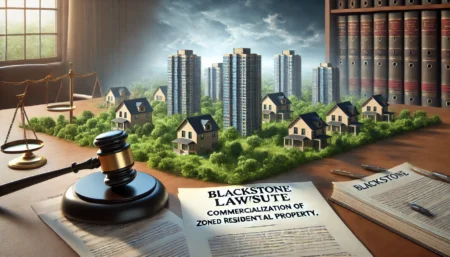When dealing with a Bloomington asbestos legal question, it is essential to understand the specific legal landscape and regulations that apply in this region. Asbestos exposure has long been associated with serious health risks, including diseases like asbestosis and mesothelioma, and addressing legal concerns related to asbestos involves navigating a multifaceted legal environment.
In Bloomington, both federal and state regulations govern the handling, removal, and compensation related to asbestos. This includes understanding local ordinances, seeking proper legal advice, and knowing your rights and options for pursuing claims or compensation. Whether you are facing issues related to property contamination, occupational exposure, or seeking compensation for asbestos-related health issues, addressing a Bloomington asbestos legal question requires careful consideration of these regulatory and legal factors to ensure a thorough and informed approach.
What are Bloomington Asbestos Legal Questions
Bloomington Asbestos Legal Question requires understanding the complex legal issues surrounding asbestos exposure and the ensuing health effects. The following frequently asked questions concerning the Bloomington Asbestos lawsuit and the responses to them:
What are the common asbestos-related diseases that may lead to a legal claim in Bloomington?
Asbestos exposure can lead to several serious diseases, including asbestosis, mesothelioma, and lung cancer. Asbestosis is a chronic lung condition caused by prolonged asbestos exposure, while mesothelioma is a rare and aggressive cancer affecting the lining of the lungs or abdomen. Lung cancer linked to asbestos exposure is also a significant concern. If you or a loved one has been diagnosed with these conditions, you may have grounds for a legal claim in Bloomington.
What are the steps to take if I suspect asbestos exposure in my Bloomington home or business?
If you suspect asbestos exposure in your Bloomington property, the first step is to avoid disturbing the suspected material. To perform a comprehensive evaluation, get in touch with a trained asbestos inspector. They can safely collect samples and have them analyzed in a laboratory. Based on the results, you may need to follow specific procedures for asbestos removal or containment, ensuring compliance with local regulations.
How do Bloomington asbestos regulations differ from state and federal laws?
Bloomington asbestos regulations are influenced by both state and federal laws but may include specific local ordinances. Federal regulations set by the EPA and OSHA provide overarching guidelines for asbestos handling and removal. State laws, such as those enforced by the Indiana Department of Environmental Management, complement these federal guidelines. Bloomington may have additional local regulations regarding notification requirements for renovations or demolitions involving asbestos.
What legal rights do individuals have if they develop asbestos-related diseases in Bloomington?
Individuals diagnosed with asbestos-related diseases in Bloomington have several legal rights, including the right to file a lawsuit for damages related to medical expenses, lost wages, and pain and suffering. They may also seek compensation through workers’ compensation if the exposure occurred in the workplace or through trust funds established by bankrupt companies responsible for asbestos products.
How can I find a qualified asbestos attorney in Bloomington?
To find a qualified asbestos attorney in Bloomington, consider seeking recommendations from local legal associations or conducting online research to identify attorneys specializing in asbestos litigation. Look for attorneys with experience in handling asbestos-related cases and a track record of successful outcomes. Initial consultations are often available to discuss your case and evaluate the attorney’s expertise and approach.
What should I include in my evidence if I am filing an asbestos claim in Bloomington?
When filing an asbestos claim in Bloomington, it is crucial to gather comprehensive evidence, including medical records documenting your asbestos-related disease, employment history showing potential exposure, and any documentation related to the presence of asbestos in your property or workplace. Additionally, records of communication with asbestos abatement professionals or property owners can be valuable.
Are there any specific statutes of limitations for asbestos claims in Bloomington?
Yes, in Bloomington, as in other jurisdictions, there are statutes of limitations that dictate the time frame within which you must file an asbestos-related claim. In Indiana, the statute of limitations for personal injury claims, including those related to asbestos exposure, is typically two years from the date of diagnosis or discovery of the disease. It is important to consult with an attorney to ensure timely filing of your claim.
What compensation options are available for asbestos-related claims in Bloomington?
Compensation options for asbestos-related claims in Bloomington may include filing a personal injury or wrongful death lawsuit, seeking workers’ compensation if the exposure occurred at work, or applying for compensation from asbestos trust funds. Each option has specific eligibility requirements and processes, so consulting with an experienced attorney can help determine the best approach for your situation.
How does the process of asbestos removal and remediation work in Bloomington?
Asbestos removal and remediation in Bloomington involve several key steps: first, a certified asbestos inspector must assess the property and identify areas with asbestos. Then, licensed abatement contractors perform the removal or containment of asbestos materials following strict safety and regulatory guidelines. The removed asbestos must be properly disposed of in accordance with local and state regulations to prevent further exposure.
What should I do if I encounter asbestos during a home renovation in Bloomington?
If you encounter asbestos during a home renovation in Bloomington, stop work immediately and avoid disturbing the material further. Contact a certified asbestos professional to conduct an assessment and handle the situation appropriately. It is important to follow local regulations, which may require notifying the city or obtaining permits for asbestos removal. Ensuring proper handling and disposal will help prevent health risks and legal issues.
Asbestos Regulations: Federal vs. State vs. Local
Asbestos regulations in the United States involve a complex interplay between federal, state, and local guidelines. At the federal level, the Environmental Protection Agency (EPA) and the Occupational Safety and Health Administration (OSHA) set comprehensive standards for the handling, removal, and disposal of asbestos. These regulations are designed to minimize exposure and protect public health. The EPA’s regulations focus on managing asbestos in buildings, while OSHA addresses workplace exposure.
In Indiana, state laws complement federal regulations by enforcing additional requirements specific to the state’s conditions and needs. In Bloomington, local ordinances may impose further rules, such as stricter notification requirements for demolition or renovation projects involving asbestos. Understanding the differences and ensuring compliance with all applicable regulations is crucial for effectively managing asbestos risks and avoiding legal penalties.
Identifying Asbestos in Bloomington Properties
Identifying asbestos in Bloomington properties involves several critical steps. Asbestos was commonly used in construction materials such as insulation, roofing, and flooring before its health risks were fully understood. To identify asbestos, start by inspecting areas known to contain older materials or those with a high likelihood of asbestos, such as pipe insulation, textured ceilings, and floor tiles.
Visual inspection alone is not sufficient, as asbestos-containing materials (ACMs) often look similar to non-asbestos materials. The most reliable method is to hire a certified asbestos inspector who can collect samples and send them to a laboratory for analysis. Proper identification ensures that any necessary removal or containment is conducted safely and in accordance with local regulations, protecting both occupants and property value.
Health Risks Associated with Asbestos Exposure
Asbestos exposure poses serious health risks, primarily affecting the respiratory system. When asbestos fibers become airborne and are inhaled, they can lodge in the lungs and other tissues, leading to severe health conditions. Asbestosis is a chronic lung disease characterized by scarring and inflammation, causing symptoms such as coughing and shortness of breath.
Mesothelioma, a rare but aggressive cancer, affects the lining of the lungs, abdomen, or heart and is strongly linked to asbestos exposure. Additionally, asbestos exposure increases the risk of lung cancer, especially in individuals who smoke. The health effects of asbestos exposure are often latent, meaning symptoms may not appear until decades after initial exposure, making early detection and intervention critical.
Understanding Your Legal Rights as an Asbestos Victim
As an asbestos victim, understanding your legal rights is essential for seeking compensation and justice. Victims diagnosed with asbestos-related diseases such as asbestosis or mesothelioma have the right to file legal claims against those responsible for their exposure. This may include former employers, property owners, or manufacturers of asbestos-containing products.
In addition to pursuing personal injury or wrongful death lawsuits, victims may be eligible for workers’ compensation benefits if the exposure occurred in the workplace. Legal rights also include access to information about your diagnosis and exposure history. It is crucial to consult with an attorney specializing in asbestos cases to navigate the legal process effectively, ensure your rights are protected, and maximize the potential for compensation.
Filing an Asbestos Lawsuit in Bloomington
Filing an asbestos lawsuit in Bloomington involves a detailed and methodical process. The initial step is to establish a clear connection between asbestos exposure and the diagnosed health condition, which often requires medical documentation and expert testimony. Once the link is confirmed, the affected individual or their legal representatives must file a formal complaint in the appropriate court.
In Bloomington, this typically involves state courts, though federal courts may be involved in cases with broader implications. The lawsuit seeks compensation for various damages, including medical expenses, lost wages, and pain and suffering. It is crucial to gather all relevant evidence, such as employment records, medical records, and documentation of exposure. Engaging an experienced asbestos attorney can help ensure that all legal requirements are met and increase the likelihood of a favorable outcome.
Role of Asbestos Attorneys in Bloomington
Asbestos attorneys in Bloomington play a crucial role in navigating the complex legal landscape surrounding asbestos-related cases. These legal professionals specialize in asbestos litigation and offer vital assistance throughout the legal process. Their responsibilities include evaluating the merits of a case, gathering and organizing evidence, and representing clients in court.
An asbestos attorney helps identify liable parties, such as employers, property owners, or manufacturers and determines the most effective legal strategy to pursue compensation. They also handle negotiations with insurance companies and opposing parties to secure settlements. With their expertise, asbestos attorneys ensure that clients understand their legal rights, meet all procedural requirements, and achieve the best possible outcome. Their in-depth knowledge of local, state, and federal regulations is essential for effectively addressing asbestos claims and protecting clients’ interests.
Compensation Options for Asbestos Claims in Bloomington
In Bloomington, individuals affected by asbestos-related diseases have several compensation options available to them. The primary route is filing a personal injury or wrongful death lawsuit, which allows victims to seek damages for medical expenses, lost wages, and pain and suffering. Additionally, if the exposure occurred in the workplace, workers’ compensation benefits may be available to cover medical costs and provide financial support during recovery.
Asbestos manufacturers who have filed for bankruptcy often have established trust funds specifically for compensating asbestos victims. These trust funds can provide a source of financial relief for those who meet the eligibility criteria. Exploring these various options with the assistance of a knowledgeable attorney can help ensure that victims receive the compensation they need to address their health and financial challenges.
Statutes of Limitations for Asbestos Claims
The statutes of limitations for asbestos claims set specific time frames within which individuals must file their lawsuits. In Bloomington, Indiana, the statute of limitations for personal injury claims related to asbestos exposure is generally two years from the date of diagnosis or from when the disease was discovered. For wrongful death claims, the time frame is typically two years from the date of the deceased’s death.
These deadlines are critical because failing to file within the statutory period can result in the loss of the right to pursue legal action. It’s important to consult with an asbestos attorney promptly to ensure that claims are filed within the appropriate time limits and that all necessary legal steps are taken to preserve your right to compensation.
Process and Best Practices for Asbestos Removal
The process of asbestos removal is complex and requires strict adherence to safety and regulatory standards to protect both workers and occupants. First, a certified asbestos inspector should assess the property to identify and evaluate asbestos-containing materials (ACMs). Once identified, licensed asbestos abatement contractors must perform the removal or containment.
This process includes sealing off the work area, using specialized equipment to remove or encapsulate the asbestos, and properly disposing of the material according to local, state, and federal regulations. Best practices for asbestos removal involve ensuring that all safety protocols are followed, such as using personal protective equipment and conducting air monitoring to detect any fiber release. Proper documentation of the removal process and compliance with regulatory requirements is essential to avoid future health risks and legal issues.
Compliance with Bloomington Asbestos Regulations
Compliance with Bloomington asbestos regulations is essential for managing asbestos risks and ensuring public safety. Local regulations in Bloomington may include specific requirements for the handling, removal, and disposal of asbestos-containing materials (ACMs). These rules often align with federal and state regulations but may include additional local stipulations, such as notifying the city before commencing demolition or renovation projects involving asbestos.
Adhering to these regulations helps prevent unauthorized exposure and potential fines. Property owners and contractors must be familiar with both the Indiana state guidelines and Bloomington’s local ordinances to ensure compliance. Engaging with certified professionals and maintaining thorough records of all asbestos-related activities are crucial steps in meeting regulatory requirements and protecting the health of all parties involved.
Recent Legal Precedents Impacting Asbestos Cases in Bloomington
Recent legal precedents have significantly influenced asbestos cases in Bloomington and beyond. One key area of impact is how courts assess causation and liability in asbestos litigation. Recent rulings have clarified the burden of proof required to establish a direct link between asbestos exposure and specific diseases. For instance, courts have emphasized the need for robust medical evidence and expert testimony to support claims.
Additionally, decisions on the availability and distribution of compensation from asbestos trust funds have affected how victims receive financial relief. These precedents shape legal strategies and the potential outcomes for asbestos claims, making it essential for attorneys and claimants to stay informed about recent developments. Understanding these precedents can guide legal approaches and enhance the effectiveness of pursuing justice in asbestos-related cases.
Conclusion
In conclusion, addressing a Bloomington asbestos legal question requires a comprehensive understanding of the intricate legal, regulatory, and health issues surrounding asbestos exposure. Navigating the complex landscape of federal, state, and local regulations, identifying and managing asbestos in properties, and understanding the legal rights and compensation options for victims are all critical components of effectively dealing with asbestos-related concerns.
By consulting with experienced asbestos attorneys and staying informed about recent legal precedents, individuals can better protect their rights and pursue appropriate remedies. Whether it involves filing a lawsuit, seeking compensation, or ensuring compliance with local regulations, addressing a Bloomington asbestos legal question with thorough research and expert guidance is essential for achieving a favorable outcome and safeguarding both health and legal interests.




